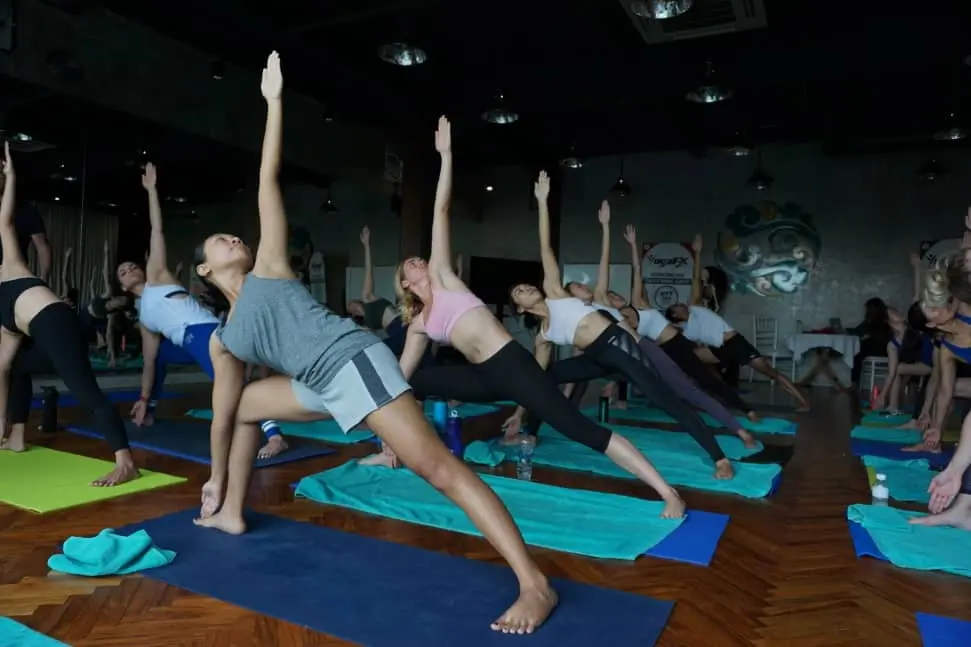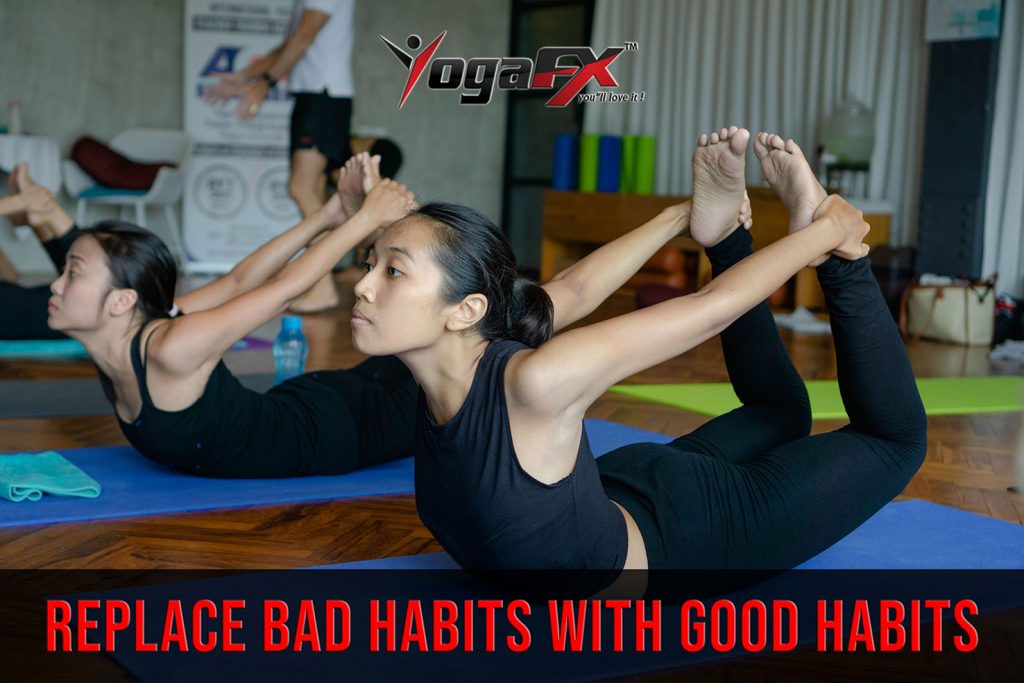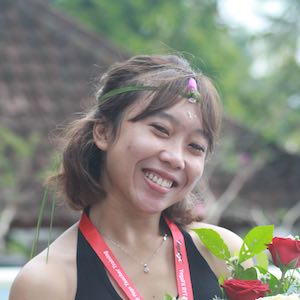The “26 and 2 Yoga” sequence represents a specific set of 26 asanas (poses) and 2 pranayama (breathing) exercises that form a structured yoga practice. Bikram Choudhury developed this sequence, which has become synonymous with Bikram Yoga, also known as Hot Yoga.
The sequence carefully selects 26 poses to engage the entire body, targeting various muscle groups, joints, and organs. The teacher provides precise alignment and instructions as they guide students through the poses in a specific order.
Practitioners typically perform the sequence in a heated room, maintaining temperatures between 95 and 105 degrees Fahrenheit (35 to 40 degrees Celsius), to promote flexibility, detoxification, and increased cardiovascular endurance.
Divided into two series, the “26 and 2 Yoga” sequence includes the Standing Series and the Floor Series. Let’s explore each series to understand their significance and the benefits they offer:
Standing Series
The Standing Series consists of the first half of the sequence and is performed while standing. It focuses on building strength, balance, and flexibility in the legs, hips, core, and upper body. The Standing Series includes poses such as Half Moon Pose, Awkward Pose, Eagle Pose, Standing Head to Knee Pose, and Standing Bow Pose, among others. These standing postures help to warm up the body, improve stability, and increase blood circulation.
Floor Series
The Floor Series makes up the second half of the sequence and is performed on the floor or mat. It primarily targets the spine, back, and hips, while also providing a deep stretch for the entire body. The Floor Series includes poses such as Cobra Pose, Locust Pose, Bow Pose, Camel Pose, and Spine-Twisting Pose, among others. These floor postures help to further enhance flexibility, release tension, and promote spinal health.
By dividing the sequence into two series, practitioners can experience a balanced and comprehensive practice that engages the entire body. The Standing Series builds strength, stability, and endurance, while the Floor Series focuses on deep stretching, spinal mobility, and relaxation. Both series complement each other and contribute to the overall benefits of the “26 and 2 Yoga” practice.
It’s important to note that the order and structure of the “26 and 2 Yoga” sequence are designed to systematically target different areas of the body and create a harmonious flow of energy throughout the practice. The combination of the Standing and Floor Series offers a holistic approach to physical and mental well-being.
Here is an overview of the 26 poses in the “26 and 2 Yoga” sequence:
Standing Series

Pranayama Breathing Exercise:
This is the initial breathing technique where practitioners stand with arms down and perform deep breathing.
The purpose is to improve lung capacity, enhance respiratory function, and promote relaxation and focus.
Half Moon Pose (Ardha Chandrasana with Pada-Hastasana):
In this pose, you stand on one leg, reaching the opposite arm and leg towards the sky, forming a crescent shape with your body.
It strengthens the legs, improves balance, stretches the side body, opens the hips, and enhances focus and concentration.
Awkward Pose (Utkatasana):
This pose is also known as the Chair Pose.
It involves squatting down as if sitting on an imaginary chair, with arms extended forward.
Awkward Pose strengthens the thighs, glutes, and core muscles, improves posture, and increases overall lower body strength.
Eagle Pose (Garurasana):
Eagle Pose is a standing balance posture that involves crossing one leg over the other and wrapping the arms in front of the body.
It helps improve balance, strengthens the legs, stretches the shoulders and upper back, and enhances focus and concentration.
Standing Head to Knee Pose (Dandayamana-Janushirasana):
This pose requires standing on one leg while extending the other leg forward and bringing the forehead toward the knee of the extended leg.
It improves flexibility in the hamstrings, strengthens the standing leg, enhances core stability, and cultivates balance and focus.
Standing Bow Pose (Dandayamana-Dhanurasana):
Standing Bow Pose involves balancing on one leg while bending the other leg backward and reaching back to hold the foot with one hand.
It opens the shoulders, stretches the chest and quadriceps, improves spinal flexibility, and develops balance and concentration.
Balancing Stick Pose (Tuladandasana):
In this pose, you stand upright with your legs extended forward and parallel to the ground while reaching your arms back.
Balancing Stick Pose strengthens the core, improves posture, enhances overall body control, and cultivates balance and focus.
Standing Separate Leg Stretching Pose (Dandayamana-Bibhaktapada-Paschimottanasana):
This pose involves standing with legs wide apart and folding forward to touch the ground while keeping the spine straight.
It stretches the hamstrings, calves, and lower back, improves hip flexibility, stimulates digestion, and promotes a sense of grounding.
Triangle Pose (Trikanasana):
Triangle Pose is performed by standing with legs wide apart, extending one arm towards the front foot and the other arm up towards the sky.
It stretches and strengthens the legs, opens the hips and chest, improves spinal mobility, and enhances focus and balance.
Standing Separate Leg Head to Knee Pose (Dandayamana-Bibhaktapada-Janushirasana):
In this pose, you stand with legs wide apart and fold forward to touch your forehead to your knee while keeping the spine straight.
It provides a deep stretch to the hamstrings, hips, and lower back, improves flexibility, and cultivates focus and balance.
Tree Pose (Tadasana):
Tree Pose involves standing on one leg with the opposite foot resting against the inner thigh or calf, with hands in prayer position at the heart.
It improves balance, strengthens the legs and core, enhances focus and concentration, and promotes a sense of stability and grounding.
Toe Stand Pose (Padangustasana):
Toe Stand Pose is performed by squatting down with heels lifted and balancing on the balls of the feet while keeping the hands in prayer position.
It strengthens the ankles, stretches the feet and calves, improves balance, and encourages concentration and inner stability.
Floor Series

Dead Body Pose (Savasana):
This is a relaxation pose where you lie flat on your back with arms and legs extended, palms facing up.
It allows the body to rest and rejuvenate, promotes deep relaxation, reduces stress, and integrates the benefits of the practice.
Wind-Removing Pose (Pavanamuktasana):
Wind-Removing Pose involves lying on your back and hugging one knee to the chest, then switching to the other knee.
It helps release gas from the digestive system, massages the abdomen, improves digestion, and relieves lower back tension.
Sit-up Pose (Pada-Hastasana):
Sit-up Pose is performed by lying on your back and sitting up with legs straight, reaching towards the toes.
It strengthens the core muscles, improves flexibility in the hamstrings and lower back, and enhances abdominal strength.
Cobra Pose (Bhujangasana):
Cobra Pose is a backbend where you lie on your stomach, place your hands beside your shoulders, and lift your upper body.
It stretches the front body, opens the chest and shoulders, strengthens the back muscles, and improves spinal flexibility.
Locust Pose (Salabhasana):
In Locust Pose, you lie on your stomach, lift your chest, arms, and legs off the ground while keeping the gaze forward.
It strengthens the back muscles, improves posture, tones the buttocks and legs, and enhances overall body awareness.
Full Locust Pose (Poorna-Salabhasana):
Full Locust Pose is an advanced variation of Locust Pose where both the upper and lower body are lifted simultaneously.
It strengthens the entire back, improves spinal alignment, increases leg and gluteal strength, and cultivates focus and stamina.
Bow Pose (Dhanurasana):
Bow Pose is performed by lying on your stomach, bending the knees, and reaching back to hold the ankles or feet.
It stretches the entire front body, opens the chest, strengthens the back muscles, and enhances spinal flexibility.
Fixed Firm Pose (Supta-Vajrasana):
Fixed Firm Pose is a seated posture where you kneel down and sit back on your heels with your torso resting between the thighs.
It stretches the thighs, knees, and ankles, improves digestion, promotes blood circulation to the lower body, and helps alleviate knee pain.
Half Tortoise Pose (Ardha-Kurmasana):
Half Tortoise Pose involves sitting on your knees, reaching your arms forward, and folding the upper body forward to rest on the ground.
It calms the mind, relieves stress and anxiety, stretches the spine and shoulders, and promotes relaxation and introspection.
Camel Pose (Ustrasana):
Camel Pose is a backbend where you kneel down, reach back to hold the heels, and open the chest while extending the spine.
It stretches the entire front body, opens the heart, improves posture, stimulates the digestive system, and boosts energy levels.
Rabbit Pose (Sasangasana):
In Rabbit Pose, you sit on your heels, place your forehead on the ground, and reach back to hold your heels with hands.
It stretches the spine and neck, stimulates the thyroid gland, improves digestion, and promotes relaxation and mental clarity.
Head to Knee Pose with Stretching Pose (Janushirasana with Paschimottanasana):
This
combination pose involves sitting with one leg extended and bending forward to touch the extended leg, then repeating on the other side. – It stretches the hamstrings, calves, and lower back, stimulates the abdominal organs, and enhances flexibility in the hips and spine.
Spine-Twisting Pose (Ardha-Matsyendrasana):
Spine-Twisting Pose is performed by sitting with one leg bent, crossing the opposite foot over the knee, and twisting the torso.
It improves spinal mobility, massages the internal organs, aids digestion, and stimulates the nervous system.
Blowing in Firm Pose (Kapalbhati in Vajrasana):
Blowing in Firm Pose involves sitting in a kneeling position and performing rapid exhales through the nose while pulling the navel in.
It detoxifies the body, clears the respiratory system, strengthens the core muscles, and increases mental alertness.
Conclusions
Practitioners combine these 26 poses with two pranayama exercises to create a comprehensive practice that aims to improve strength, flexibility, balance, concentration, and overall well-being. It’s important to note that while Bikram Yoga is commonly associated with the “26 and 2 Yoga” sequence, instructors can offer variations and modifications to accommodate practitioners of different levels and abilities.
When practicing the “26 and 2 Yoga” sequence, individuals experience a challenging yet rewarding journey that allows them to explore the depths of their physical and mental capabilities while cultivating a deeper connection with themselves.




